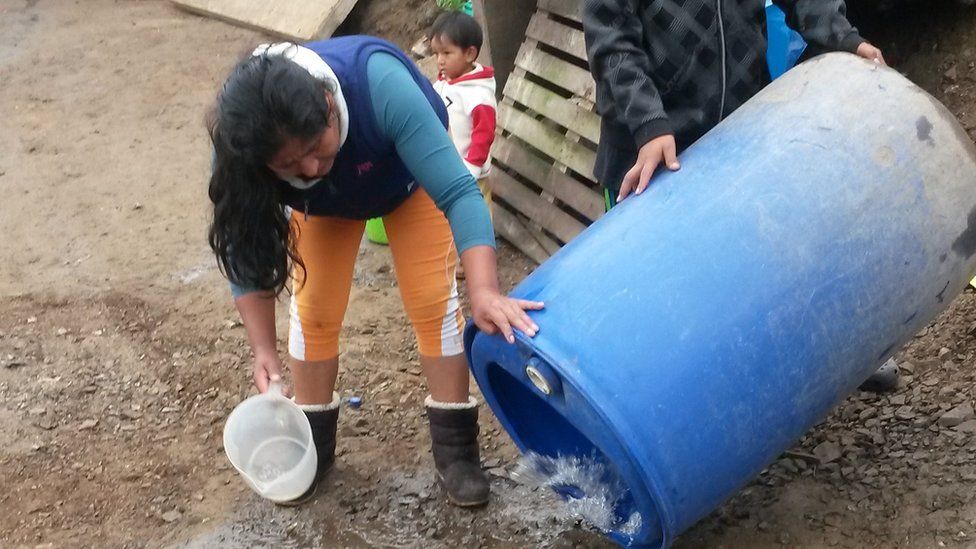In Peru water is a high price for Lima's poor
- Published

The IMF and World Bank are holding their annual meetings in Lima, Peru, and one of the issues delegates are considering is the problem of income inequality.
One of the cruellest insults of inequality in the capital Lima, for the poor, is how cheaply the rich often seem to live.
Nowhere is this more apparent than on a walk through the neighbourhood of Nueva Rinconada. It's a slum that spreads across one of the hills above the city.
Here, Lydia Sevillano and her neighbours pay a high price just to stay alive.
Take water. It costs Lydia 80 sol - $25 (£16.50) - per month to buy water for her family.
It doesn't come from the tap. It's delivered by truck, every day, to plastic tanks outside the small shack that is the family home.
Lydia admits that other essentials are sometimes foregone to pay for water.
Steep Gradations
"We have to save any way we can," she says. "Even if we have to take food from my children, because we can't live without water."
Even within the slum there are steep gradations of inequality.
Scramble a few hundred yards up the hillside and the dwellings are just as densely packed, but even more flimsily built.
Here water costs three times what Lydia pays lower down the slope.
The added problem (and cost) for someone like Flor Quinteros on the higher ground is that the water truck can't reach her door, so steep is the unpaved hill.
So, the water must be carried by hand.
Oxfam estimates that a poor person in Lima pays ten times more for their water than someone living in an affluent residential area.
Money is only part of the cost, of course. There is also the hard physical labour of pouring and carrying the water from the tanks, which themselves must be cleaned.
There's also the time that Lydia and Flor, and thousands like them must spend waiting for the water trucks to make their erratic way up the steep, dirt tracks of the slum.
Other Costs
That's time that cannot be spent in paid employment.
The cost is also counted in the health problems that plague the world of carried water, and the haphazardly cleaned containers.
Disease is a debilitating, impoverishing fact of life in Nueva Rinconada. So too are the mudslides caused by earth tremors or severe storms.
Then, all of a sudden, too much water turns the hillside's sand to mud, sweeping many from their precarious perch in this world.
Wall of Shame
At the very top of the hill, is the final insult that Lima adds to the injurious effects of poverty: a wall, ten feet high, garlanded with razor wire.
It was built with one purpose - to keep Lydia and Flor and their families from straying into the neighbourhood on the other side of the hill.
They call it the Wall of Shame.
Casuarinas, the neighbourhood over the wall, is naturally a rather different place.
Here there aren't shacks clinging to the loose topsoil of a hillside, but properly engineered structures with running water which afford ocean views and security to their affluent, healthy inhabitants.
And the water which pours from their taps? It's cheap and abundant enough to fill the neighbourhood's hundreds of swimming pools.
Down in the city, the delegates to the annual meetings of the IMF and World Bank gather.
In recent years, both organisations have been at pains to stress how damaging severe income inequality can be to national economies.
For evidence of this, delegates need only lift their gaze from the conference hall to the hills surrounding the city.
- Published8 April 2015
- Published12 February 2015
- Published24 January 2015